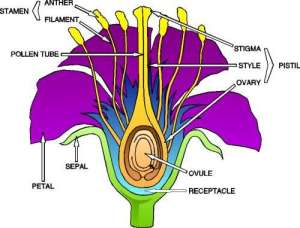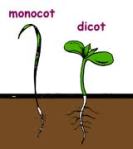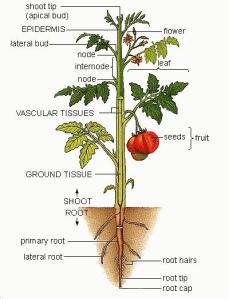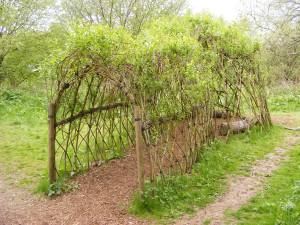Red Alder (Alnus rubra)
During the storm I dreamt of Red Alder. I dreamt that the spirit of the tree was leading me away from danger. Then I woke and saw ruts of the big machines and I cried for the forest. Soon after the Red Alder came up through the sun-baked soil of the clear-cut. – Ellen O’Shea – Radical Botany
Some plants are trailblazers. They show up when great change has happened. They grow in the ruts of human civilization, the mud, the flood tracks and the places where sun and wind prohibit other plants to grow. Red Alder just such a trailblazer. A true pioneer plant. It shows up to heal, grows fast, stays a short time, then allows the tall conifers, the redcedar and majestic Bigleaf maple and other trees to take over. It is a friend and healer of the forest. It is a tree that perseveres in the direst of circumstances. Even after massive clear-cutting and wild fire destruction where the forest seems changed forever, the Red Alder will push up out of the graves of other trees and change the soils. It is an alchemist. It will attract the bacterium needed to change the acid of riddled sun-parched soils into the conditions needed to bring back an entire eco-system. After the Red Alder emerges, the tiny herbs, the ferns and sedges follow. Soon after that the wildflowers, elderberry shrubs, Indian plum and wild honeysuckle will follow. And then the conifers and larger deciduous trees follow and a whole forest eco-system emerges.
The Red Alder soothes the hardest of earth and entices the fungi, bacteria and nutrients back into the forest floor. The bacterium on its roots fix the nitrogen needed to feed the forest community. A grove of Red Alder will only live about 100 years, just enough time to coax the forest community to come home one more time. As a healer of humans its bark is used to sooth the acid stomach and gallbladder, clean the lymph glands and bowels, entice the poisons from the skin and open up the lungs. A poultice of the bark will bring forth the inner poison.
Red Alder wood chips are often used to cultivate eatable and medicinal mushrooms such as the Shiitake.
THE NAME
Clallam – s’ko’noiltc
Quinault – malp
Swinomish – su-k’uba’ts
Alder is the common name of a genus of flowering plants (Alnus) belonging to the birch family Betulaceae. The English name was derived from the bright rusty red color that develops in bruised or scraped bark. The outside bark is mottled, ashy-gray and smooth, often draped with moss. But just inside is the glorious red used for dye and medicine.
HABITAT
Red alder (Alnus rubra) are the largest species of alder on the west coast of North America. The tree can grow to 40 feet or more, needs full sun, is a nitrogen fixer, tolerates poor, wet soil and is found in valleys in the Cascadian bio-region as well as the foothills of the Cascade Mountains. Red alder is a fast- growing but short-lived (old at fifty, with a maximum age of about a hundred years).
For years, as the rain forests of the Pacific Northwest were devastated by massive clear cutting of the region, Red Alder was thought to be invasive and was destroyed. For the first 100 years of European settler decimation, the Red Alder was thought to be scrub, a noxious weed and unnecessary for forest health. Then in the 1970’s and 80’s as second and third growth Douglas fir tree farms failed to thrive, research showed that an essential part of the forest eco-system was missing. Red Alder, an amazing nitrogen fixer had been systematically removed from the forests using massive amounts of chemicals and extraction methods of forest management.
With the lack of nitrogen in the forest soils, other native species began to be stunted and attract disease. But as foresters began to study forest re-growth, they noticed that Red Alder was one of the first trees to return to a clear-cut. They also noticed that as the Red Alder stands thrived, so did the small plants, shrubs, and then other tree species thrive. The Red Alder is a forest healer; it brings life back to much damaged soils. For soils that have been heavily sprayed with toxic chemicals, the introduction of Red Alder is less successful.
RED ALDER AND NITROGEN FIXING BACTERIUM
An important nitrogen-fixing bacterium in our Cascadian bioregion is Frankia ahni. Red Alder (Alnus rubra) and other types of alders are the host for this important bacterium. Alder is particularly noted for its important symbiotic relationship with Frankia ahni, an actinomycete, filamentous, nitrogen-fixing bacterium. This bacterium is found in root nodules, which may be as large as a human fist, with many small lobes and light brown in appearance.
I found a great online source for explaining the nitrogen fixing process. “A Nitrogen Fixation: The Story of the Frankia Symbiosis by Peter Del Tredici a Harvard researcher can be found at this link: http://arnoldia.arboretum.harvard.edu/pdf/articles/1995-55-4-a-nitrogen-fixation-the-story-of-the-frankia-symbiosis.pdf
Here is a quote from that document:
“Before atmospheric nitrogen can be used by plants, it must be “fixed,” that is, split and combined with other chemical elements. This process requires a large input of energy and can occur either biologically, within the cells of various bacteria, or chemically, in fertilizer factories or during lightning storms.
Among all living organisms, only bacteria have evolved the complex biochemical mechanisms required for nitrogen fixation. All “higher” plants and animals that are said to fix nitrogen are really only the symbiotic partners of the bacteria that do the actual work.”
Red alder is often found growing near coast Douglas-fir (Pseudotsuga menziesii subsp. Menziesii), western hemlock (Tsuga heterophylla), grand fir (Abies grandis), western redcedar (Thuja plicata), and Sitka spruce (Picea sitchensis) forests. When found along streambanks it is commonly associated with willows (Salix spp.), red osier dogwood (Cornus stolonifera), Oregon ash (Fraxinus latifolia) and bigleaf maple (Acer macrophyllum).
THE LEAVES
Alternate, deciduous (fall off the limb in the autumn), broadly elliptic, and sharp-pointed at the base and tip. The leaf top is dull green and smooth, and the underside is golden-colored and hairy. The leaf margin is revolute, the very edge being curled under, a diagnostic character which distinguishes it from all other alders. The leaf turns yellow in autumn before it falls from the tree.
THE FLOWER
The flowers are catkins with elongate male catkins on the same plant as shorter female catkins, often before leaves appear; they are mainly wind-pollinated, but also visited by bees to a small extent. These trees differ from the birches (Betula, the other genus in the family) in that the female catkins are woody and do not disintegrate at maturity, opening to release the seeds in a similar manner to many conifer cones. The catkins form in the fall, and then overwinter, ready to open or flower in spring. The female catkin is cone-like, droops slightly, usually in clusters of threes.
The male catkin is slender, cylindrical, hanging in clusters of 3 to 5 from short leafless branches.
THE FRUIT
The fruit is clusters of brownish cones which are quite small (up to 2 cm long). They remain on the trees over the winter and contain oval winged nutlets. About 2000 seeds are normally produced by the cones which are normally spread by the wind but also by the water and birds. The seeds have a viability of about 45%. Seeds are normally dispersed between the months of October and March.
THE BARK
The bark is thin, grey, and smooth often with white patches of lichens. The bark will turn bright red to rusty red when cut.
As a weaver I often sought the bark of the Red alder as a source of dye. I peeled back the bark and exposed it to air and it would turn a brilliant red. As the bark dried the color of the bark changed from red to a slightly golden brown. I fixed the color using apple cider vinegar.
MEDICINE
Red Alder is a bitter and an astringent (Meyer p.3). Bark twigs and buds were used. An ointment of the bark was used to cure eruptive skin diseases (Stuhr p. 21). Catkins are edible and high in protein, but are very bitter in taste and utilized usually on for survival food. The wood is used to smoke cooked food.
The Bark of the Red alder contains anti-inflammatory salicin that metabolizes into salicyclic acid in the body.
Salicin is related to Aspirin. Red Alder bark is used for relief from poison oak, insect bites, and skin irritations. The Red Alder bark is used in infusions to treat lymphatic disorders and tuberculosis.
The bark was boiled and drunk for colds, stomach trouble, and scrofula sores. The rotten bark and woody parts were rubbed on the body to ease “aching”. (Gunther p. 27)
The wood was used to make canoes, boxes and paddles and multiple other utility implements. Like the Western Red Cedar, this tree was widely used by the first people of the Cascadian bio-region. The wood was important because it could be used while still green, seasoned and not split in the sunlight. The wood of the Red Alder has long been used to smoke salmon. The bark was used to line baskets for storing wild berries, roots and other foods and herbs.
POLLINATOR AND BUTTERFLY HABITAT
Alder leaves and sometimes catkins are used as food by numerous butterflies and moths. The late winter and spring catkins are beneficial to more than one species of bee, and depending on nearby habitat may attract other insect pollinators, such as butterflies, hoverflies, and pollinating beetles. If the Red Alder is close by water, the pollinators can be plentiful.
Red Alder is a better butterfly host plant than the Asian butterfly bush, which only provides some nectar, not structure to attach chrysalis, nor leaves for caterpillars after hatching.
If you would like to learn more about native plants and the pollinators they attract, order the wonderful book put out by the Xerces Society called “Attracting Native Pollinators”. The book is coauthored by four Xerces Society staff members Eric Mader, Matthew Shepherd, Mace Vaughan, and Scott Black in collaboration with Gretchen LeBuhn, a San Francisco State University botanist and director of the Great Sunflower Project. More on the book go here – http://www.xerces.org/announcing-the-publication-of-attracting-native-pollinators/
VIDEO AND ONLINE RESOURCES
Article about Red Alder healing capacity by Kiva Rose, herbalist- http://bearmedicineherbals.com/alder-tree-of-transformation-healing.html
How to identify a Red Alder – http://www.youtube.com/watch?v=tBdmL5A0_3c
Interactive Distribution Map of Alnus rubra – http://www.plantmaps.com/nrm/alnus-rubra-red-alder-native-range-map.php
REFERENCES
- Del Tredici, Peter (1995) Nitrogen Fixation: The Story of the Frankia Symbiosis, Harvard University, Arnoldia Arboretum – viewed on the web on November 9, 2012 – http://arnoldia.arboretum.harvard.edu/pdf/articles/1995-55-4-a-nitrogen-fixation-the-story-of-the-frankia-symbiosis.pdf
- Gunther, Erna. (1945) (Revised 1973) Ethnobotany of Western Washington. Knowledge and use of Indigenous plants by Native Americans, University of Washington Press.
- Meyer, Joseph E. (1918) (Revised 1970) The Herbalist, Meyer Books Publishing
- Pojar & McKinnon, (1994) Plants of the Pacific Northwest Coast, Washington, Oregon, British Columbia & Alaska, Lone Pine Publishing, Vancouver, British Columbia
- Stur, Ernst T. (1933) Manual of Pacific Coast Drug plants, Ernst Theodore Stuhr Papers, Oregon State University Archives, Corvallis, Oregon.
- Tilford, Gregory L., Edible and Medicinal Plants of the West, ISBN 0-87842-359-1









































